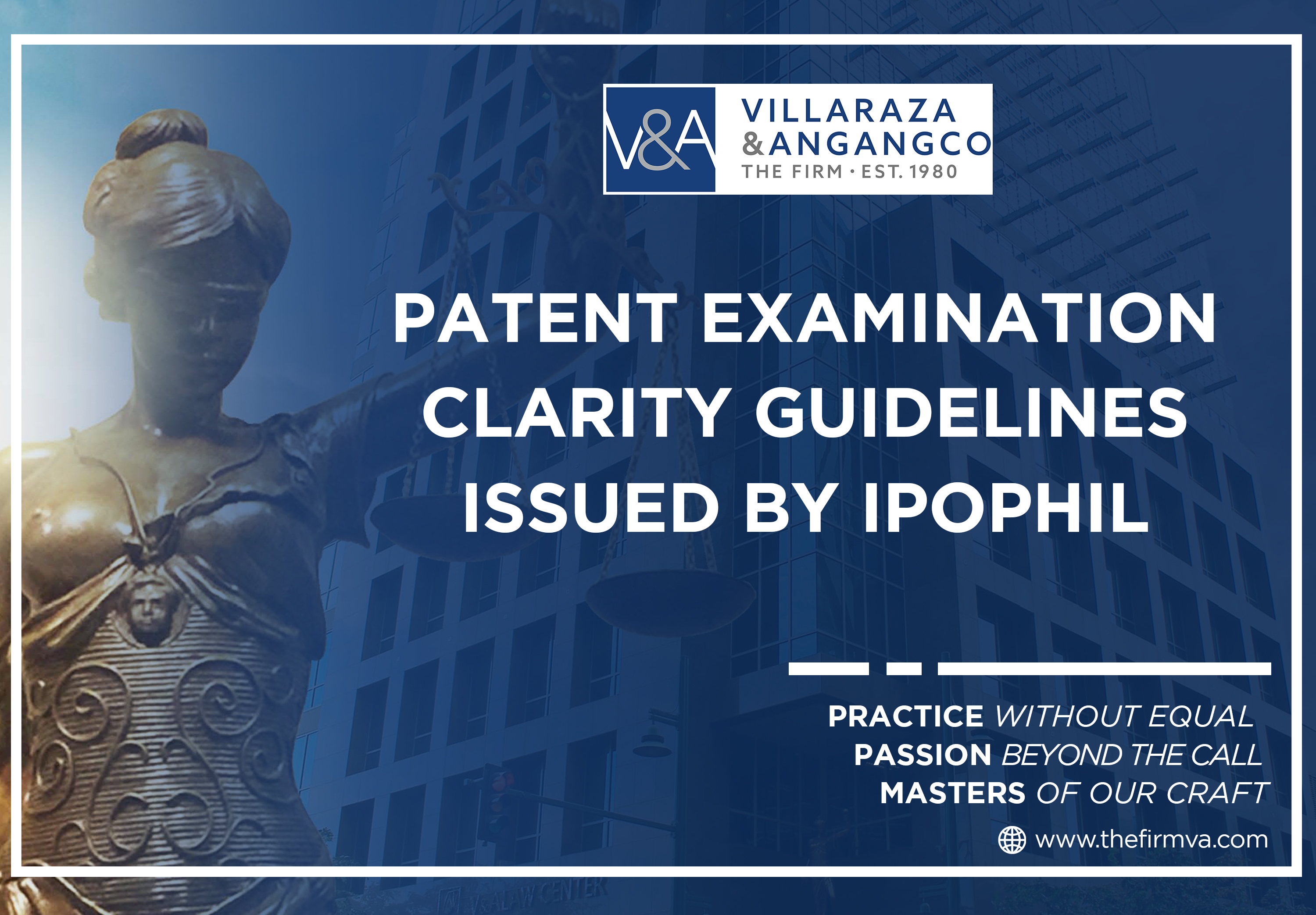

The Intellectual Property Office of the Philippines issued in 2022 the Clarity Guidelines (Guidelines) for Patent Applications. The Guidelines aim to assist the Examiners in assessing clarity of claims, as required by the Intellectual Property Code of the Philippines.[1] It is important that the claims be clear and concise in order to ensure clear delineation of the scope of the invention.[2] Since the claims of an invention define the scope of protection, clarity considerations are of utmost importance in patent applications.[3]
The Guidelines divide claims into two categories: (i) the physical entity, or (ii) the activity. Claims to physical entity cover substances or compositions, as well as objects, articles, apparatus, machine or apparatus system.[4] Activity claims cover the use of a product to effect a process, such as those processes that may be effected on material products, energy, other processes or on living things.[5]
The Guidelines further classify claims into independent and dependent claims. An independent claim is one that is able to stand alone and refers to the essential features of the invention without reference to other claims.[6] A dependent claim refers back to an independent claim and includes all the features of the cited claim.[7] Reference to another claim may be made only with respect to certain features of the cited claim, in which case it is not a dependent claim.[8] Reference to more than one other claim shall be in the alternative and cannot be the basis for any other multiple dependent claim.[9]
Clarity considerations such as (i) Support in the Description, (ii) Conciseness, (iii) Broadest Reasonable Interpretation and (iv) Claims Consistency are outlined in the Guidelines.[10] Claims must have full support in the description in order to comply with requirements pertaining to sufficiency of the disclosure.[11] Individual claims and claim sets as a whole must be concise and undue repetition of words should be avoided.[12] Claims are generally interpreted according to their broadest possible meaning, and special meanings must be indicated in the Description.[13] Claims should also be assessed with respect to the meaning of the words in the context of the art.[14] The Claims must be consistent with the Description, including the terminologies used, which may affect the scope of the invention claimed.[15]
Use of imprecise terms in Claims may cause clarity issues. Some of the problematic terms and expressions in terms of clarity of Claims are (i) Relative Terms, (ii) Approximate Terms, (iii) Unusual Parameters, (iv) Optional Features, (v) Alternative Expressions, and (vi) Transitional Terms [Consisting vs. Comprising], are discussed in the Guidelines.[16] Further causes of clarity issues are the (vii) Subject Matter to be Protected, (viii) Product by Process Claims, (ix) Features Defined in Relation to an Unclaimed Apparatus or Device, (x) Functional Features, (xi) Mechanism of Action, (xii) Result to be Achieved, (xiii) Negative Limitation (Disclaimer), (xiv) Trade Name, Reference to the Description and (xv) Reference Sign/s; Text in Brackets or Parenthesis.[17] Illustrative examples of the foregoing issues are provided in the Guidelines.
~o0o~
This article is intended for reportorial and informational purposes only and should not be considered as legal advice.
For any questions or legal concerns regarding Patent Applications, you may contact the author:
MA. SOPHIA EDITHA C. CRUZ-ABRENICA
Senior Counsel, Villaraza & Angangco
mc.abrenica@thefirmva.com
[1] Guidelines, p. 2.
[2] Id.
[3] Guidelines, p. 6.
[4] Guidelines, p. 3.
[5] Id.
[6] Guidelines, p. 4.
[7] Id.
[8] Guidelines, p. 5.
[9] Id.
[10] Guidelines, p. 7-8.
[11] Guidelines, p. 7.
[12] Id.
[13] Guidelines, p. 8.
[14] Id.
[15] Id.
[16] Guidelines, p. 10-22.
[17] Guidelines, p. 22-34.